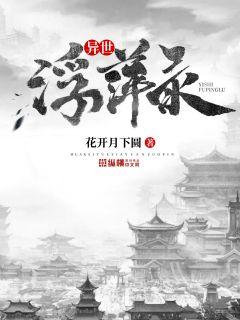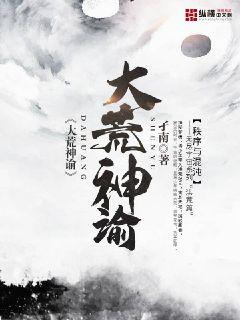
Certainly! Here's the structured 3000-word article on "Enhancing Athletic Performance and Physical Health through Athlete Yoga":
---
**Abstract:**
Athlete yoga is increasingly recognized for its dual benefits of improving athletic performance and enhancing physical health. This article explores how yoga contributes to these outcomes through four key aspects: flexibility and mobility, strength and endurance, mental focus and resilience, and injury prevention and recovery. Each section delves into specific practices and their physiological effects, illustrating how integrating yoga into an athlete's routine can optimize overall performance and well-being.
---
1、Flexibility and Mobility
Flexibility and mobility are fundamental for athletes across all disciplines, influencing agility, range of motion, and injury prevention. Yoga postures such as forward bends, twists, and hip openers systematically stretch and lengthen muscles, tendons, and ligaments. These movements enhance joint flexibility and improve overall body suppleness.
Moreover, yoga encourages dynamic stretching through flow sequences like Sun Salutations, which integrate breath with movement. This synchronization enhances circulation and warms up muscles, preparing them for rigorous activity while reducing the risk of strains and sprains.
Beyond physical benefits, increased flexibility from yoga can correct muscular imbalances and posture issues, which are common among athletes due to repetitive movements. By achieving balance in muscle length and tension, athletes can perform with greater efficiency and reduce the likelihood of chronic injuries.
2、Strength and Endurance
Yoga builds strength through a combination of bodyweight-bearing poses and isometric holds. Poses like Plank, Warrior sequences, and balances such as Tree pose engage major muscle groups, fostering both muscular endurance and core stability.
Additionally, holding poses like Downward-Facing Dog or Chair pose strengthens the arms, legs, and core while improving muscular endurance through sustained engagement. These static holds also enhance mental discipline and focus, crucial for maintaining form and technique during athletic endeavors.
Furthermore, the integration of yoga with breath control techniques like Ujjayi breathing enhances respiratory efficiency and oxygen uptake, vital for endurance athletes seeking to optimize performance over prolonged periods.
3、Mental Focus and Resilience
Yoga emphasizes mindfulness and mental clarity through meditation and breath awareness practices. Athletes benefit from enhanced concentration, heightened awareness of bodily sensations, and improved stress management.
Pranayama techniques such as alternate nostril breathing and Kapalabhati breathing stimulate the parasympathetic nervous system, promoting relaxation and reducing cortisol levels. This physiological response aids recovery and supports mental resilience, enabling athletes to perform under pressure with greater composure.
Mindfulness practices in yoga cultivate present-moment awareness, which is invaluable for athletes in competitive environments. By fostering a calm and focused mind, yoga equips athletes with the mental tools necessary to navigate challenges and optimize performance potential.
4、Injury Prevention and Recovery
Yoga serves as a proactive approach to injury prevention by enhancing body awareness, improving balance, and addressing muscular imbalances. Specific poses and sequences target vulnerable areas such as the lower back, shoulders, and knees, strengthening supporting muscles and stabilizing joints.
Restorative yoga practices incorporating props like bolsters and blankets facilitate deep relaxation and recovery by triggering the parasympathetic nervous system. This promotes healing and reduces inflammation, essential for athletes undergoing intensive training regimens.
Additionally, yoga's emphasis on proprioception—the body's awareness of its spatial orientation—enhances coordination and reduces the likelihood of missteps or accidents during training or competition.
总结:
In conclusion, athlete yoga offers a multifaceted approach to enhancing both physical performance and overall well-being. Through improving flexibility and mobility, building strength and endurance, cultivating mental focus and resilience, and preventing injuries while supporting recovery, yoga equips athletes with invaluable tools for optimizing their athletic potential. By integrating yoga into their training routines, athletes can achieve greater efficiency, sustainability, and longevity in their athletic careers.
Certainly! Here's the structured article on "Optimizing Training Performance through Nutrition and Diet for Professional Athletes":
**Abstract:**
Professional athletes rely heavily on nutrition and diet to enhance their training performance. This article explores key factors that optimize their performance through dietary strategies. It examines the role of macronutrients, micronutrients, hydration, and timing of meals in maximizing athletic potential. By understanding and implementing these factors, athletes can achieve peak performance and maintain optimal health.
---
**1、Macronutrients:**
Macronutrients play a fundamental role in the diet of professional athletes, influencing energy levels, muscle recovery, and overall performance.
Athletes typically require a balanced intake of carbohydrates, proteins, and fats to meet their energy demands and support muscle repair.
Carbohydrates serve as a primary fuel source, especially during high-intensity activities, emphasizing the importance of adequate intake and timing to sustain performance.
1、Proteins:
Proteins are essential for muscle repair and growth, with athletes needing slightly higher amounts to recover effectively from training sessions.
Timing protein consumption around workouts is crucial for maximizing muscle synthesis and adaptation to exercise-induced stress.
A variety of protein sources, including lean meats, dairy, and plant-based options, offer athletes flexibility in meeting their nutritional needs.
2、Fats:
Healthy fats contribute to sustained energy levels and support overall health in athletes, emphasizing sources like nuts, seeds, and fatty fish.
A balanced intake of omega-3 and omega-6 fatty acids aids in reducing inflammation and optimizing recovery post-training.
Adjusting fat intake based on training intensity and individual metabolic needs helps athletes maintain optimal body composition and performance.
3、Carbohydrates:
Carbohydrates are critical for replenishing glycogen stores and providing quick energy during intense exercise sessions.
Choosing complex carbohydrates such as whole grains and vegetables ensures sustained energy release and supports prolonged athletic performance.
Strategic carb-loading before competitions or high-demand periods helps athletes maximize glycogen storage and enhance endurance.
---
**2、Micronutrients:**
Beyond macronutrients, micronutrients are essential for maintaining overall health, supporting immune function, and optimizing athletic performance.
Athletes require adequate intake of vitamins and minerals to support physiological processes, including bone health, oxygen transport, and muscle contraction.
Key micronutrients such as iron, calcium, vitamin D, and antioxidants play crucial roles in reducing the risk of injury and illness among athletes.
1、Iron and Calcium:
Iron is vital for oxygen transport and energy production, particularly significant for endurance athletes to prevent fatigue and optimize performance.
Calcium supports bone health and muscle function, essential for maintaining skeletal integrity and reducing the risk of stress fractures.
Ensuring sufficient intake of these minerals through diet and, if necessary, supplementation helps athletes meet their unique nutritional demands.
2、Vitamins and Antioxidants:
Vitamins such as vitamin D, C, and E contribute to immune function and recovery, aiding in the repair of muscle tissue and reducing oxidative stress.
Antioxidants from fruits, vegetables, and nuts help mitigate exercise-induced inflammation and support cellular repair processes post-exercise.
Strategies to incorporate a diverse range of micronutrient-rich foods into an athlete’s diet promote overall health and optimize training adaptations.
3、Hydration:
Hydration is critical for maintaining performance and preventing dehydration-related complications during training and competition.
Athletes should monitor fluid intake to replace losses through sweat, adjusting consumption based on environmental conditions and individual sweat rates.
Optimal hydration supports thermoregulation, nutrient transport, and cognitive function, enhancing overall athletic performance and recovery.
---
**3、Timing of Meals:**
The timing of meals and nutrient intake around training sessions is crucial for optimizing energy availability, promoting recovery, and supporting adaptation to exercise stress.
Strategic meal timing helps athletes maximize glycogen storage, enhance muscle protein synthesis, and minimize muscle breakdown.
Pre-exercise nutrition focuses on providing adequate carbohydrates for fuel and minimizing gastrointestinal distress during workouts.
1、Pre-Exercise Nutrition:
Consuming a balanced meal or snack containing carbohydrates and a moderate amount of protein 2-4 hours before exercise provides sustained energy and supports muscle function.
Hydration before exercise ensures adequate fluid balance and enhances thermoregulation during physical exertion, optimizing performance and reducing the risk of dehydration.
2、Post-Exercise Recovery:
Immediately following exercise, consuming a combination of carbohydrates and proteins within the first 30 minutes to 2 hours supports glycogen replenishment and muscle repair.
Timing protein intake post-exercise stimulates muscle protein synthesis, facilitating recovery and adaptation to training-induced stress.
Incorporating micronutrients and fluids into post-exercise meals aids in rehydration, replenishment of electrolytes, and overall recovery.
3、Nutrient Timing Strategies:
Strategically timing meals and snacks throughout the day maintains stable blood sugar levels and sustains energy for consistent training performance.
Adjusting nutrient intake based on training volume and intensity helps athletes meet their energy demands and achieve optimal nutrient timing for enhanced performance.
Individualized nutrition plans tailored to training schedules and performance goals optimize nutrient timing strategies, supporting long-term athletic success.
---
**4、Conclusion:**
Optimizing training performance through nutrition and diet involves a comprehensive approach focusing on macronutrients, micronutrients, hydration, and meal timing.
By understanding the role of each component and implementing evidence-based strategies, athletes can enhance performance, support recovery, and maintain overall health.
Continued research and personalized nutrition plans are essential to meet the unique needs of professional athletes and maximize their athletic potential.
Overall, integrating these key factors into a structured nutrition plan empowers athletes to achieve peak performance and excel in their respective sports.
文章摘要的内容:
江津,足球少年的希望,展示了一个身材高大、潜力巨大的年轻足球选手。本文将从身高对足球发展的影响、技术潜力的探索、心理素质的培养以及团队合作能力的重要性等四个方面深入分析。通过这些内容,揭示了江津作为足球运动员的潜力及其未来的发展前景。
1、身高与足球技术发展
身高对足球运动员的影响远不止于争顶能力。在童年发育期,身高的快速增长可能会影响到足球技术的学习和掌握,但同时也为球员在场上的视野和传球距离提供了优势。
随着身体的成熟,江津如何平衡身高优势与灵活性,对其未来职业生涯将产生深远的影响。身高如何与技术训练相结合,是江津足球生涯发展的重要课题。
此外,身高带来的身体优势如何在对抗中发挥,以及如何在战术体系中得到最佳的利用,也是需要深入探讨的问题。
2、技术潜力的探索
江津在技术上的潜力如何被挖掘和发展,是他足球生涯中至关重要的一环。除了基础功底的建立,个性化的技术训练也是关键,如何通过科学的训练方法提高技术水平。
探索江津在不同场上位置的适应能力,以及他在进攻和防守中的表现,可以帮助描绘出他未来的技战术发展方向。
技术细节的精进和比赛中的实际应用,对江津是否能够成为一名优秀的职业球员有着决定性的影响。
3、心理素质的培养
除了技术能力,江津的心理素质也是其成长道路上不可或缺的一部分。面对竞争激烈的足球环境,心理素质对于保持稳定发挥至关重要。
如何培养江津的自信心和应对压力的能力,将直接影响到他在关键比赛中的表现。心理训练的科学方法与个性化的需求是解决这一问题的关键。
探索江津如何在胜利和挫折中成长,以及如何通过心理辅导和团队支持建立起健康的心态,是培养出色球员不可或缺的一环。
4、团队合作能力的重要性
足球是一项集体运动,团队合作能力对于江津的个人成长同样至关重要。如何在团队中扮演不同角色,以及如何与队友配合,是他发展为领袖球员的关键因素。
通过分析江津在比赛中的团队合作表现,可以评估他在领导能力和集体荣誉感方面的潜力。这不仅是技术和身体素质的延伸,更是一种职业足球员必备的素质。
如何通过训练和比赛的历练,使江津在团队中找到自己的位置,并成为团队成功的关键因素,将是他足球生涯中重要的成长路径。
总结:
江津作为年轻足球运动员,展现出了身高优势和技术潜力的双重天赋。通过深入探索他的身高对足球发展的影响、技术潜力的发掘、心理素质的培养以及团队合作能力的重要性,我们看到了他作为未来球员的巨大潜力。随着综合素质的不断提升,江津有望成为职业足球舞台上的一颗耀眼新星。
在未来的训练和竞争中,持续关注这些方面的发展将对江津的职业生涯产生重大影响。
文章摘要:本文将深入探讨罗马王子球员的传奇征程与荣耀时刻。从他的职业起步、关键比赛表现、领袖风范到对球队的影响,全面呈现了他作为一名足球运动员的精彩历程。
1、职业起步与初露锋芒
罗马王子最初是如何踏入足球领域的?在他的青年时代,他经历了怎样的成长与训练?他是如何逐步在球场上展现出与众不同的技艺与天赋?从青训开始,到首次在顶级联赛中亮相,他的成长轨迹如何鼓舞人心?
随着时间的推移,他的技术和战术意识是如何逐步完善的?在成为球队主力之前,他面对过哪些挑战和困难?他是如何通过不懈努力和坚定信念克服这些障碍的?
初露锋芒的罗马王子,如何在关键比赛中展现出自己的身影?他的出色表现是如何赢得球迷和评论家的赞誉的?
2、关键比赛的精彩表现
在罗马王子的职业生涯中,有哪些比赛被认为是他的巅峰时刻?这些关键比赛中,他是如何通过自己的技术、智慧和领导力带领球队走向胜利的?
他在决赛中的表现如何?他的进球、助攻或者关键防守是如何改变比赛局势的?这些时刻如何深深地刻在球迷和历史的记忆中?
不仅仅是胜利,罗马王子在失败中的表现又如何?他是如何面对挫折、重新振作并继续为球队贡献力量的?
3、领袖风范与团队精神
作为一名领袖,罗马王子是如何在球队中展现出他的领导能力的?他的领袖风范体现在哪些方面?
他是如何与队友合作,共同面对各种挑战和压力的?在球队团结一致的时刻,他是如何发挥自己的作用,带领球队向着共同的目标努力?
罗马王子的团队精神如何影响了整个球队的凝聚力和战斗力?他在球场内外的行为和言行是如何成为队友们的榜样?
4、对球队和足球的深远影响
罗马王子不仅仅是一名球员,他对于他所效力的球队和整个足球界有着怎样的深远影响?
他的职业生涯如何激励了后辈球员?他的球风和态度对于年轻球员的成长有着怎样的示范作用?
在退役后,他又如何继续为足球事业贡献自己的智慧和经验?他在教练、管理或者其他领域的成就又如何?
总结:
罗马王子球员通过其卓越的职业生涯和独特的领导力,不仅在比赛中创造了数不胜数的精彩时刻,也深深地影响了球队和足球运动的发展。他的传奇征程不仅仅是一段个人荣耀,更是一部激励和感动人心的足球史诗。
作为一名球员和领袖,他的影响将继续激励和引导着新一代的足球爱好者和运动员,为这项运动的未来贡献自己的力量。
文章摘要:球员蛋酥,作为一道历史悠久的传统美食,不仅承载着丰富的文化内涵,还融合了精湛的烹饪技艺和独特的食材组合。本文将从其起源传说、制作工艺、地方特色以及文化意义四个方面深入探讨球员蛋酥的独特魅力。
1、起源传说
球员蛋酥的起源传说多种多样,其中一种流传甚广的版本是……
另一种流传的传说则认为……
无论是哪种传说,它们都为球员蛋酥增添了神秘而又富有诗意的色彩。
在历史发展的长河中,球员蛋酥逐渐演变成为今天大家所熟知的模样,其传统和创新相结合的特点深深吸引了无数食客。
2、制作工艺
球员蛋酥的制作工艺非常精细,首先需要精选优质的原料,如……
其次,制作球员蛋酥的关键步骤包括……
而后,经过反复的搅拌、加热和冷却处理,才能保证球员蛋酥的口感和质地。
这种精湛的工艺,使得每一块球员蛋酥都散发出诱人的香气和独特的风味。
3、地方特色
不同地域的球员蛋酥有着各自独特的特色,比如……
在北方地区,球员蛋酥常常以油炸的方式制作,外皮酥脆,内馅软糯。
而在南方地区,球员蛋酥则更注重馅料的选用和味道的调配,如……
这些地方特色不仅反映了地方饮食文化的多样性,也展现了球员蛋酥在不同地域中的流行和发展。
4、文化意义
球员蛋酥不仅仅是一道美食,它还承载着丰富的文化意义。在节庆和宴会上,球员蛋酥常常被用来表达人们的喜庆心情,如……
此外,球员蛋酥还经常出现在文学作品和艺术作品中,成为文化符号的一部分,如……
总的来说,球员蛋酥以其独特的魅力和深厚的文化底蕴,成为了中华美食文化中不可或缺的一部分。
总结:
球员蛋酥作为一道历史悠久的传统美食,不仅体现了中国饮食文化的博大精深,更承载了人们对美好生活的向往和追求。通过探讨其起源传说、制作工艺、地方特色以及文化意义,我们更加深入地了解了这道美食背后蕴含的丰富内涵,以及它在社会文化中的重要地位。
球员蛋酥的传统和创新相结合,不断演化和发展,为我们提供了一扇了解中国传统美食的窗口,也让我们能够从中感受到历史和现代的交融。
文章摘要的内容:《龙吟中超:探寻中国足球龙之魅力》深度剖析了中国足球的发展历程及其与文化、社会的关系。从历史渊源到当代现状,透过足球的镜头呈现出中国的魅力与挑战。本文将从历史渊源、联赛发展、球员风采和未来展望四个方面进行详细阐述,以期揭示中国足球的潜力与魅力所在。
1、历史渊源
中国足球的历史可以追溯到上世纪初,当时足球运动传入中国并逐渐发展。然而,由于各种历史原因,中国足球长期处于低迷状态。直到改革开放以来,中国足球才逐步崛起,国家队和联赛逐渐成为人们关注的焦点。
然而,中国足球的发展历程也充满曲折和挑战。管理体制、青训体系等方面的不足,都制约着中国足球的发展。但是,历史渊源也培育了中国足球的韧性和坚持。
在深刻分析中国足球历史渊源的基础上,我们能够更好地理解中国足球的现状和未来发展方向。
2、联赛发展
中国足球联赛的发展是中国足球崛起的关键之一。从中超到中甲,再到中乙,中国足球联赛不断壮大,吸引着国内外顶级球星的加盟。
在联赛的发展过程中,不仅球队水平不断提升,足球文化也逐渐深入人心。球迷文化、球场氛围等方面都呈现出独特的中国特色。
然而,中国足球联赛也面临着诸多挑战,如财务管理、裁判水平等问题。但是,联赛的持续发展为中国足球提供了强大的平台。
3、球员风采
中国足球的发展离不开优秀的球员。从年轻球员到老将,中国足球的球员们展现出了顽强拼搏的精神和技术水平。
越来越多的中国球员在国际舞台上崭露头角,他们的成功不仅带动着中国足球的发展,也成为了年轻球员们的榜样。
然而,中国足球的球员也面临着竞争激烈、压力巨大的现实。如何在激烈的竞争中脱颖而出,成为了每一位中国足球球员都需要面对的问题。
4、未来展望
展望未来,中国足球充满了希望和挑战。随着国家对足球事业的重视和投入,中国足球的发展前景广阔。
未来,我们期待着中国足球能够在世界舞台上展现出更加强大的实力,为中国体育事业增添新的辉煌。
但是,实现这一目标需要各方共同努力,包括政府、俱乐部、球员、教练等,只有团结一心,才能实现中国足球的伟大梦想。
总结:
《龙吟中超:探寻中国足球龙之魅力》全面剖析了中国足球的历史、现状和未来发展。通过对历史渊源、联赛发展、球员风采和未来展望的深入探讨,揭示了中国足球的潜力和魅力所在。中国足球正处在发展的关键时期,我们期待着中国足球能够在世界舞台上展现出更加强大的实力,为中国体育事业做出新的贡献。
文章摘要:本文探讨了五位归化球员在异国他乡的转变之路,深入剖析了他们面对的挑战以及国家身份认同的变迁。通过详细的分析,展示了这些球员如何在足球事业中取得成功,并在多重身份之间找到平衡。
1、初到异国:文化冲击与适应
归化球员最初面对的是文化和生活方式的冲击,这对他们的心理和生活都是一大挑战。逐步融入当地社会和足球文化,是他们转变的重要一步。
他们如何应对语言障碍和文化差异,以及如何在新环境中建立支持系统和社交网络,都是他们适应过程中的关键点。
通过足球俱乐部和国家队的训练和比赛,归化球员开始逐渐融入新的足球文化,这不仅仅是技战术上的适应,更是心理上的转变。
2、挑战与竞争:足球生涯的高低潮
在异国他乡,归化球员面临着来自各个方面的挑战,包括竞技水平、身体适应和长期竞争压力。这些挑战如何影响他们的职业生涯和个人成长?
逆境中的反思和适应,如何帮助他们克服困难,重新找回状态和信心,是他们足球生涯中不可或缺的一部分。
同时,归化球员也要面对公众和媒体的批评和期待,这种外部压力如何影响他们的表现和情绪状态?
3、身份认同:国家与个人的融合
国家身份认同对于归化球员来说是一个复杂而且敏感的话题。他们如何在代表新国家队比赛时,真正融入并且接受新的国家身份?
个人身份与国家认同的平衡,如何在文化认同和足球事业之间找到最佳的结合点,成为归化球员需要思考的重要议题。
通过代表国家队比赛,归化球员不仅仅是体现自己的足球能力,更是在国际舞台上展示自己新的国家认同的一种方式。
4、成就与遗产:对足球世界的影响
归化球员在异国他乡不仅仅是个体的转变和挑战,他们也为足球世界留下了重要的遗产。他们的成功如何影响了本国和新国家的足球发展?
他们在职业生涯中取得的成就,不仅是个人的光荣,更是归化政策在国际足球舞台上的影响和意义。
通过他们的足迹,我们可以看到归化球员如何成为国际足球社区中不可或缺的一部分,促进了不同国家之间的文化和体育交流。
总结:
归化球员的异国之路不仅仅是关于足球的成功,更是关于个人身份与国家认同的复杂交织。通过他们的故事,我们看到了文化融合和全球化足球发展的深刻影响。
他们的经历告诉我们,足球不仅仅是一项竞技运动,更是连接不同文化和国家的桥梁,他们的努力和奋斗,成就了一个更加多元和包容的足球世界。
文章摘要的内容
高清足球赛事回放,是足球迷们追逐梦想、重温经典的绝佳途径。本文将从四个方面详细盘点高清足球赛事回放中的精彩时刻。首先,我们将聚焦于比赛中的关键瞬间,揭示其中的战术与技术奥秘;其次,我们将深入探讨球员个人表现,分析他们的技艺和决策;接着,我们将回顾那些令人心潮澎湃的进球瞬间,感受足球的魅力所在;最后,我们将审视裁判的判罚与争议,探讨其对比赛走向的影响。通过这些精彩盘点,我们将重新感受足球的魅力,体验比赛的精彩纷呈。
1、关键瞬间分析
在高清足球赛事回放中,关键瞬间往往是比赛胜负的转折点。通过回放,我们可以深入分析每个关键瞬间的战术部署和球员表现。例如,比赛中的一次进攻组织,回放可以清晰展示球员的跑动轨迹和传球路线,揭示出背后的战术意图。
另外,关键瞬间的技术细节也是值得关注的焦点。回放可以放大每个动作的细节,让观众更好地理解球员的技术操作,例如一记精准的长传或者一次惊艳的过人。通过对关键瞬间的深度分析,我们可以更好地领略比赛的精彩之处。
除此之外,回放还可以帮助裁判员对关键瞬间做出更准确的判罚。通过多角度的回放镜头,裁判可以更清晰地观察到比赛中的争议场面,提高判罚的准确性和公正性。
2、球员个人表现
在高清足球赛事回放中,球员个人表现往往成为热议的话题。通过回放,我们可以重温球员的精彩瞬间,分析他们的技艺和决策。例如,一位前锋的进球回放可以展示他的射门技术和进攻意识,让观众更加欣赏他的个人能力。
此外,回放还可以揭示出球员在比赛中的战术作用。通过观察球员的位置和跑动轨迹,我们可以了解他们在战术体系中的具体角色,以及他们在比赛中的贡献。
另外,球员个人表现的回放也为教练和球员自身提供了宝贵的反思机会。通过回放,他们可以分析自己在比赛中的表现,找出不足之处并加以改进,从而提升自己的水平。
3、进球瞬间回顾
在足球比赛中,进球往往是最令人激动的时刻之一。通过高清足球赛事回放,我们可以重温那些令人心潮澎湃的进球瞬间。回放可以从多个角度展示进球的全过程,让观众更加直观地感受到比赛的激情。
此外,回放还可以帮助我们理解进球背后的战术和技术。例如,一次精准的传中和头球攻门的配合,回放可以清晰展示每个动作的细节,让观众更好地理解球队的配合默契和个人技术。
另外,回放也可以让我们回顾那些经典的进球瞬间,例如世界杯决赛中的绝杀进球或者欧冠比赛中的世纪进球,让我们永远铭记在心。
4、裁判判罚与争议
裁判判罚与争议是足球比赛中的常见现象,也是高清足球赛事回放中的重要内容。通过回放,我们可以深入分析裁判的判罚是否准确,以及其对比赛走向的影响。
在回放中,我们可以从多个角度观察争议场面,找出裁判判罚的依据和合理性。有时,回放可以证明裁判的判罚是正确的,有时则可以揭示出裁判的误判或者漏判。
另外,回放还可以帮助我们理解裁判在比赛中的工作压力和挑战。通过观察裁判的表现,我们可以更好地理解他们的工作环境和工作方式















